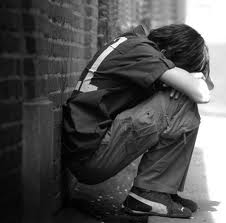
|
|
Aside from physical and mental health, poverty in childhood and adolescence is associated with a higher risk for poorer cognitive and academic outcomes, lower school attendance, lower reading and math test scores, increased distractibility, and higher rates of grade failure and early high school dropout. Poor children are also more likely than other children to have externalizing and other behavior problems, or emotional problems, and are more likely to engage in delinquent behaviors during adolescence. Finally, growing up in poverty is associated with lower occupational status and lower wages, poorer health, and deficits in working memory in adulthood.

Difference by age
After reaching 23 percent in 1993—the highest rate since 1964—child poverty fell to 16 percent in 1999, then rose slowly through 2005, to 18 percent. Beginning in 2007, the data began to reflect the most recent economic downturn. Between 2006 and 2010, child poverty increased by more than one-fourth, to 22 percent of all children under 18, then remained steady between 2010 and 2011.
Many researchers and advocates use 200 percent or less of the poverty threshold to identify families with "low-income". In 2011, more than four in ten of children (44 percent) lived in low-income families. Ten percent of children under age 18 lived in families in extreme poverty (below 50 percent of the poverty threshold). All these measures of poverty have followed similar patterns over time.
Differences by Family Structure
Children are much more likely to be poor if they live in single-mother families than if they live in married-couple families. In 2011, 48 percent of children living in single-mother families were poor, compared with 11 percent of children living in married-couple families. The same pattern holds for white, black, Hispanic, and Asian children. For example, more than half of black and Hispanic children in single-mother families were poor in 2011. In contrast, 16 percent of black children, and 23 percent of Hispanic children, in married-couple families were poor during the same year.
State and Local Estimates
State-level child poverty estimates are available from the Census Bureau’s American Community Survey (ACS). The ACS has yearly estimates of children living at multiple ratios of the poverty levels, from 2005 onward for areas with populations of 65,000 or more, and 3-year-average estimates for areas with 20,000 or more.
Additionally, 2000-2011 state estimates for children in poverty (100 percent), children in extreme poverty (50 percent), children below 150 percent poverty, children below 200 percent poverty, children below 250 percent poverty, and children in poverty by age group are available from the KIDS COUNT Data Center. (Click on Economic Well-Being)
